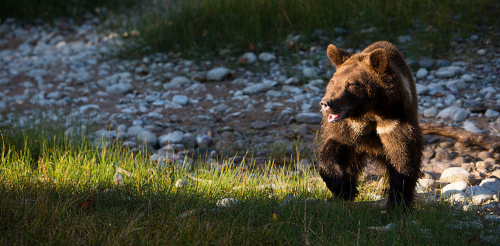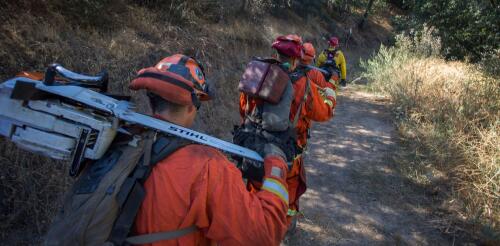environment
Montanans know spring has officially arrived when grizzly bears emerge from their dens. But unlike the bears, the contentious debate over their future never hibernates. New research from my lab reveals how people’s social identities and the dynamics between social groups may play a larger role in these debates than even the animals themselves. Social scientists like me work to understand the human dimensions behind wildlife conservation and management. There’s a cliché among wildlife biologists that wildlife management is really people management, and they’re right. My research seeks to understand the psychological and social factors that underlie pressing environmental challenges. It is from this perspective that my team sought to understand how Montanans think about grizzly bears. To list or delist, that is the question In 1975, the grizzly bear was listed as threatened under the Endangered Species Act following decades of extermination efforts and habi...
Climate change is threatening America’s water infrastructure as intensifying storms deluge communities and droughts dry up freshwater supplies in regions that aren’t prepared. Severe storms that swept through the South in April 2024 illustrated some of the risks: In New Orleans, rain fell much faster as the city’s pumps could remove it. A water line broke during the storm near Hattiesburg, Mississippi. Other communities faced power outages and advisories to boil water for safety before using it. We study infrastructure resilience and sustainability and see a crisis growing, particularly in the U.S. Southeast, where aging water supply systems and stormwater infrastructure are leaving more communities at risk as weather becomes more extreme. Neighborhoods across the New Orleans area flooded on April 10 as the region’s pumps couldn’t keep up with the rainfall. Credit: Reed Timmer. To find the best solutions and b...
Curious Kids is a series for children of all ages. If you have a question you’d like an expert to answer, send it to curiouskidsus@theconversation.com. Why don’t female crickets chirp? – Avery, age 8, Los Angeles Insects communicate in lots of different ways, for many reasons. Some, such as butterflies and beetles, use color, patterns and other visual cues to attract mates or warn potential predators that they don’t taste very good. Others, like fireflies, use bioluminescence – light that they produce in their bodies – to attract potential mates. Still others send chemical signals to interact with other animals and plants, or to defend against predators. Insects also use sound to communicate, most often to attract mates. The ways in which they produce sounds can vary a lot, depending on what insect is making the sound. Ah, there’s the rub Mos...
If you call 911 in rural Georgia, the nearest emergency responders might come from the local prison. In 1963, the Georgia Department of Corrections began a program to train incarcerated people as firefighters to support not only their prisons, but also the surrounding communities. Over time, the program has grown dramatically. Today, prison fire teams from 19 Georgia state prisons, including a women’s prison, and six county prisons are trained in firefighting and emergency medical response. The crews respond to motor vehicle accidents, structure fires, brush fires, hazardous materials incidents and search and rescue efforts, among other emergencies – all without being paid a salary. Jackson County, Georgia, describes incarcerated firefighters as responding to “every structural fire in Jackson County, where they serve as manpower support to every Fire Department on scene.” The all-female firefighting crew at Lee Arrendale Stat...
The Himalayas stand as Earth’s highest mountain range, possibly the highest ever. How did it form? Why is it so tall? You might think understanding big mountain ranges requires big measurements – perhaps satellite imaging over tens or hundreds of thousands of square miles. Although scientists certainly use satellite data, many of us, including me, study the biggest of mountain ranges by relying on the smallest of measurements in tiny minerals that grew as the mountain range formed. These minerals are found in metamorphic rocks – rocks transformed by heat, pressure or both. One of the great joys in studying metamorphic rocks lies in microanalysis of their minerals. With measurements on scales smaller than the thickness of a human hair, we can unlock the age and chemical compositions hidden inside tiny crystals to understand processes occurring on a colossal scale. Measuring radioactive elements Minerals containing radioactive elements are of special interest...



